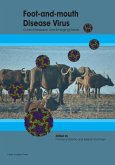Bats act as reservoirs for over 200 viruses, many of which cause severe, often life-threatening, diseases in humans, livestock and wildlife. Examples include rabies virus, SARS and MERS coronaviruses and Ebola virus. Surprisingly many of these viruses cause asymptomatic infections in bats. In fact it has been postulated that these viral infections may even confer a benefit (as yet unknown) to the bat host. Research into the molecular and cellular biology of the virus-host interaction and studies on the immune systems of the bat hosts are providing new insights into these fascinating viruses and are essential first steps for the development of novel strategies for the prevention of bat-borne zoonotic infections. In this multi-authored volume, international experts review the current hot-topics in this field. Chapters have extensive reference sections that should encourage readers to pursue each subject in greater detail. The book opens with an introductory chapter that is followed by six chapters (chapters 2-7) reviewing different important families of bat-borne viruses. The following two chapters (chapters 8-9) focus on the bat immune system. Chapters 9-12 cover in vitro isolation, in vivo models and metagenomics for viral discovery in bats. The book closes with a fascinating look at the special ability of bats to act as reservoirs for so many different types of viruses. This book is an invaluable reference source of timely information for students, virologists, immunologists, medical and veterinary professionals, and scientists working on bat-borne diseases. It is also highly recommended for all university libraries.
Hinweis: Dieser Artikel kann nur an eine deutsche Lieferadresse ausgeliefert werden.
Hinweis: Dieser Artikel kann nur an eine deutsche Lieferadresse ausgeliefert werden.









